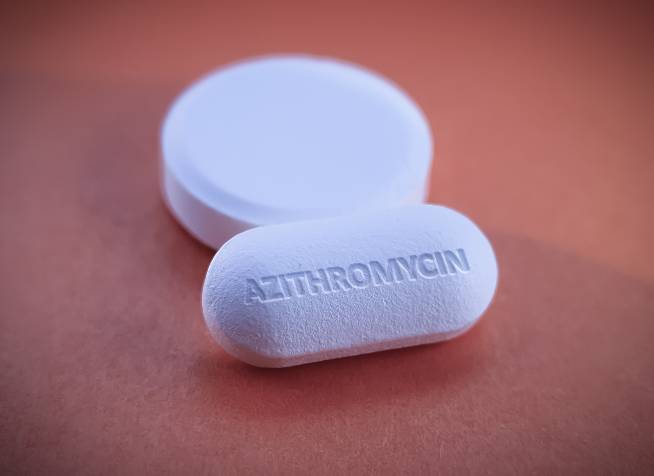PREMISE: Bacterial STI Prophylaxis Failed to Cut Infection Rates for Pregnant Women Living With HIV
The phase IIb trial evaluated whether adding a novel regimen of monthly azithromycin to a daily dose of trimethoprim-sulfamethoxazole would decrease the rate of STI at time of delivery among pregnant women living with HIV in Cameroon.
(Adobe Stock)

Adding monthly azithromycin (AZ) to a daily prophylactic regimen of trimethoprim-sulfamethoxazole (TMPS) did not reduce the rate of bacterial sexually transmitted infections (STIs) detected at delivery in pregnant women living with HIV in Cameroon. The results of the randomized, double-masked, placebo-controlled, phase IIb PREMISE trial were presented as a poster at IDWeek 2022, held October 19-23, 2022, in Washington, DC.
Cameroon is an endemic region for malaria and it is recommended that all pregnant women take daily TMPS to prevent the mosquito-borne disease. Investigators with the University of Alabama at Birmingham, along with a team from Cameroon, sought to evaluate whether adding a novel regimen of monthly AZ would decrease the rate of STIs at time of delivery among pregnant women in the region living with HIV. An estimated 5.7% of pregnant women in Cameroon are living with HIV, and bacterial STI rates range from 2-10%.
Participants were randomized to either daily TMPS and monthly AZ (1 gram daily for 3 days) or daily TMPX and placebo AZ for 3 days. The trial included women with confirmed HIV infection who were < 28 weeks pregnant and under prenatal care at 3 facilities in Yaounde, Douala, and Mutengene, Cameroon. Only singleton pregnancies were included in the study.
The team assessed STI rates via a composite measure that included presence of chlamydia (CT), gonorrhea (NG), and/or incident syphilis at delivery. Provider-collected vaginal swabs were analyzed with nucleic acid amplification testing to detect CT/NG. Incident syphilis was defined serologically as a newly positive treponemal test or 4-fold increase in RPR/VDRL titer since baseline.
For the statistical analysis, investigators compared proportions by relative risk with 95% confidence intervals and a defined a significant P value as < .05.
A total of 308 participants were randomized to either the study regimen (n = 155) or standard of care (SOC) (n = 153). Median age among study participants was 32 years (28–36). All participants in both arms were currently taking antiretroviral therapy (ART) at the time of enrollment and had been diagnosed with HIV a median of 3 years prior.
Efficacy was similar across both treatment arms. The composite STI outcome in the treatment group was 5 (3.2%) compared with 5 (3.3%) in the SOC arm, for a total relative risk of 0.78 (95% CI 0.21 – 2.84; P = .70). Investigators noted that adverse birth outcomes measured lower in the AZ arm, but the difference was not statistically significant (preterm delivery 5% vs 10.3% [P = .1], low birthweight 2.8% vs 5.1% [P = .34], composite adverse birth outcome 8.4% vs 13.1% [P = .19]). Across the study groups, rates of STI, malaria, and adverse birth outcomes were low.
The research team reported that the study was underpowered for the primary outcome of composite STI measure because of lower than anticipated rates of incident and prevalent bacterial STI.
“Contrary to our hypothesis, the addition of monthly azithromycin to standard daily TMPS prophylaxis among pregnant women living with HIV in Cameroon and mostly enrolled in the 2nd trimester did not reduce the rate of bacterial STI at delivery,” investigators concluded.
